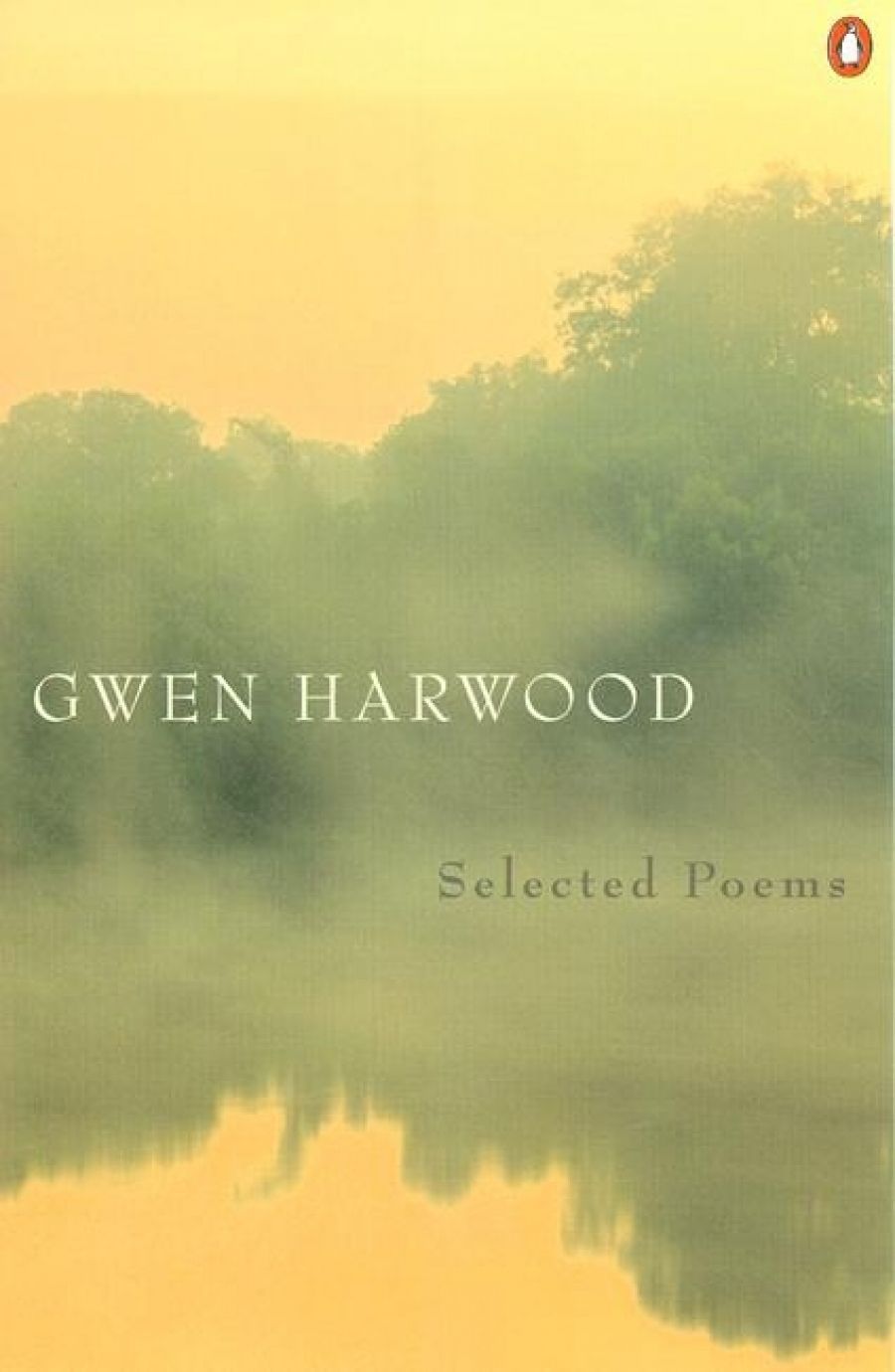
- Free Article: No
- Contents Category: Poetry
- Review Article: Yes
- Online Only: No
- Custom Highlight Text:
One afternoon at the recent Melbourne Writers’ Festival I noticed that, while adulatory throngs surrounded Elizabeth Jolley and Thea Astley, another notable member of our literary matriarchy, Gwen Harwood, sat quietly outside in the sun, deep in philosophical discussion with a younger poet. This is a comment on the differential status accorded to fiction writers and poets, but also on the relatively self-effacing Gwen and her presence or place in the literary world.
- Book 1 Title: Selected Poems
- Book 1 Biblio: Angus & Robertson, $12.95 pb, 216 pp
- Book 1 Readings Link: booktopia.kh4ffx.net/Y73zP
The publication of the third revised edition of her Selected Poems in the year which marks her seventieth birthday provides an occasion for the payment of tribute to one of the most important and accomplished of Australian poets.
It may be that the belated recognition of Harwood’s achievements is partly due to the subversive activities of her earlier years. A generation of literary magazine editors suffered from the guerrilla attacks of her now famous pseudonymous alter egos, including Miriam Stone, Francis Geyer, and the inimitable Walter Lehmann whose ‘Eloise and Abelard’ poems delighted readers of the Bulletin’s ‘Red Page’ in 1961 with their acrostic message to all editors.
Perhaps the sardonic wit and irrepressible playfulness which have characterised much of Harwood’s writing – and endeared her to a couple of generations of discerning readers – were also seen as disqualification from the pantheon, evidence of a lack of high seriousness. Could this be what the Bone Scan blurb writer meant in the otherwise inexplicable reference to her ‘deceptively civilised lightness of touch’ (a phrase which must have delighted Gwen)?
In the latest Selected Poems, we can see the extraordinary and impressive range and diversity of Harwood’s poetry; the satisfying balance between her intellectual and spiritual preoccupations and her concern with the joys and the pain of relationships as daughter, lover, wife, mother, and friend. In the poems written over three decades, Harwood moves with equal mastery from the reflective and lyrical to the jaunty, the acerbic and the joyously witty – sometimes effortlessly combining all these elements:
Insomnia’s world: pale stars knotted together
like the back of someone’s careless sewing, moonlight
(that safe and general antidote to reason)
masking ghosts who seen by day are only rocks and young trees.
Who made it all? Who cares? Perhaps the dead frame their impassioned sampler
the right way round: A Life, stitched with true meaning.
The dominance of music in Gwen Harwood’s life is evident not simply as frequent theme but in the metrical qualities, the forms and structures of her poetry. It might be said that her poetic achievement represents the contradiction of her belief in an early poem that:
... words can never contain, as music does, the unsayable
grace that cannot be defined
yet leaps like light form mind to mind.
In one of her letters to Thomas Riddell (now published in Blessed City) the twenty-three-year-old Gwen wrote of her response to Dylan Thomas: ‘An extraordinarily rich vocabulary fixes the attention of that part of the mind that responds to sensible and sensuous images, but there is nothing for the intellect to fasten on:’ And she went on to say, ‘What annoys me most about modern writing is its bonelessness.’
Her own, writing has firm, strong bones and is deeply satisfying to all parts of the mind, dazzling with its imagery of light and shade, of bright water and rocks and trees in all seasons. It engages the intellect with an intensity that is rare in Australian poetry.


Comments powered by CComment